Now that the dust and hype of CES 2024 has settled, let’s talk about the most exciting TVs coming out in 2024. Because there’s a lot of great stuff on the way. Also, let’s talk about the real reasons we should be excited.
Beyond the hype
I say this every year because some things never change: CES is a hype fest. That’s just what it is. All the shiny new gear — and especially the TVs — are exciting at the moment, there in Las Vegas, the most hype city there is. And I think we love that about CES. That show is not the right time for me to try to be pragmatic. I can barely keep up with all the model numbers and associated specs as I shoot video live from the show floor.
But now, we can be a little more pragmatic. We can take some time to have a chat about which TVs are the most exciting and the less emotionally charged reasons why they are exciting. Sometimes, it’s because they are borderline controversial — or as controversial as TV tech can get.
This list follows the order in which I saw the TVs at CES. Which means we have to start with LG.
LG TVs
It would be fair to guess that I’d be starting this list with the LG transparent OLED TV — properly known as the LG Signature OLED T. But I’m not. Don’t get me wrong, that TV is ridiculously cool, and I hope I get to spend some quality time with it. But for as cool as it is, that is the kind of specialty TV that only a handful of wealthy folks will buy. Exciting? Yes. Totally. Will I review it? I sure hope so. But I want to keep focused on TVs that those reading this are likely to buy, and I don’t see the OLED T being one of them.
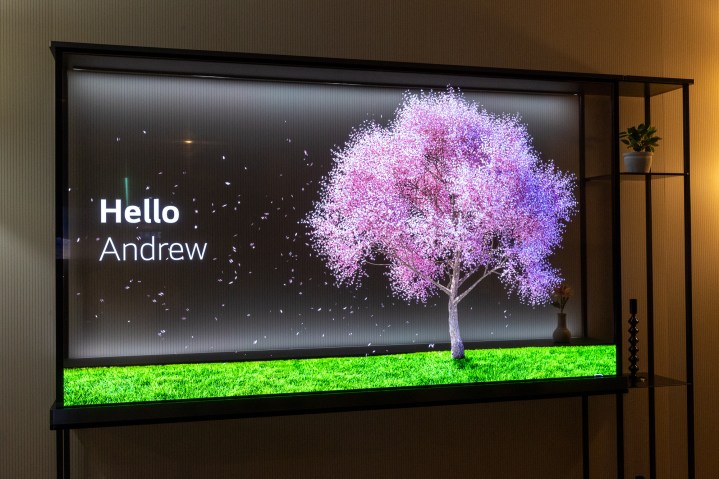
What I really want to focus on are the LG G4 Gallery Series OLED and its wireless partner in crime, the OLED M. They essentially are the same TV from a picture performance perspective, but the OLED M happens to come with LG’s Zero Connect box and has an ever so slightly different design because of it.
The new LG G4 is exciting because it has the latest-gen MLA (or micro-lens array) WOLED panel. Now, I don’t expect a revolutionary increase in brightness here. But I do think that because this new MLA panel is a bit more efficient, there’s an opportunity for LG to bump up the average picture level just a bit. That would lead to higher overall brightness and maybe allow LG to take its foot off the gas with its protective auto brightness limiter.

I am also excited to see how LG’s new Alpha 11 processor improves some key picture quality factors like upscaling and clean-up of low-bit-rate and bit-depth-starved streaming content. In short, I’m excited to see how LG’s best OLED TVs stack up to Sony’s. We go on and on about Sony’s awesome processing. Let’s see how close — or maybe just different — LG’s latest processor looks in comparison. That alone is going to make OLED TV reviews this year super fun.
I’m not discounting LG’s C4 OLED. I think it could be a strong competitor this year. But I’m trying to stick to the most exciting TVs. And for me, that’s the LG G4 and, by extension, the new OLED M wireless models.
Samsung TVs
Next up is Samsung. First off, a little behind-the-scenes narrative: Samsung’s First Look event was dizzying in its scope. Samsung had so much to see there. Televisions. Speakers. Projectors. Computers. Other stuff. It was hard to wrap my brain around it all.
But Samsung was spending more effort hyping up its latest top-tier OLED TV — the S95D — and its futuristic transparent micro-LED tech than most other TVs.
I want to be super excited about the latest crop of Samsung Neo QLED TVs – and indeed, I think some interesting software features will be built in. But from a picture quality performance aspect, I don’t know how much of a leap forward they will be over the 2023 models. We’ll find out. But, if we want to talk excitement? We have to talk about two main products.
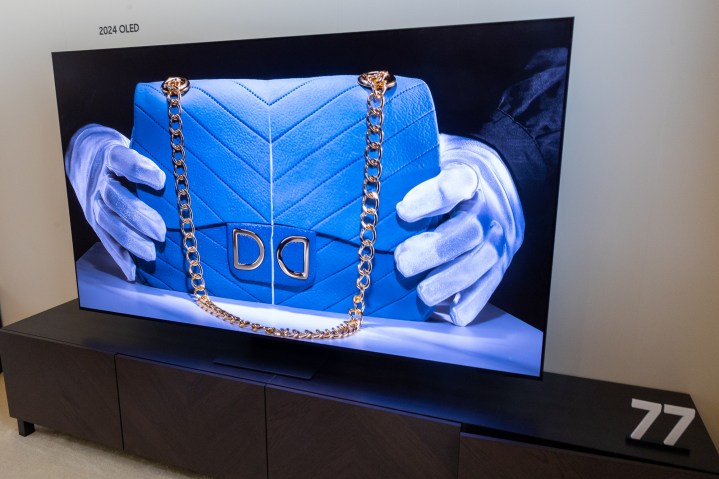
The first is the new S95D OLED. There are two notable changes for this TV in 2024. One: it will have Samsung Display’s more efficient and slightly brighter QD-OLED panel. And two: this TV has a new anti-glare implementation that I think will be, ahem, very polarizing for TV enthusiasts. And if you didn’t see that obvious pun coming from me, you don’t know me very well, do you?
I don’t expect the S95D to be notably brighter than the S95C any more than I expect the LG G4 to be notably brighter than the LG G3. To detect any brightness changes, we’d have to stick the S95D right next to the S95C. And even then, you’d have to look hard for the brightness differences. (And we will do that in a future post.)
I’m optimistic that the slightly brighter third-gen QD-OLED panel might make up for any drop-off in brightness caused by the anti-glare treatment.
But the real reason I’m interested in comparing this year’s flagship Samsung OLED against last year’s flagship OLED is to see the net effect of the new anti-glare tech it has implemented in this new S95D. And you may be surprised to know that it isn’t to validate the effectiveness of the anti-glare. I can tell you right now it is extremely effective. No, I think we need to see what trade-offs, if any, are made with the new anti-glare implementation.
Some folks already hate the idea that the S95D may be less glossy. And it would be fair to be concerned it may not appear to have specular HDR highlights as intense as the S95C since anti-glare almost always dims the picture ever so slightly. But I’m optimistic that the slightly brighter third-gen QD-OLED panel might compensate for any brightness drop-off caused by the anti-glare treatment.
Still, we need to talk about whether the lack of the glossy screen is really a liability. And we want to see if the screen itself, in full light, appears to be pitch black. I think a big part of the reason Samsung has done this is because some folks were not fans of the fact that the QD-OLEDs blacks could appear gray in a light-bathed room.
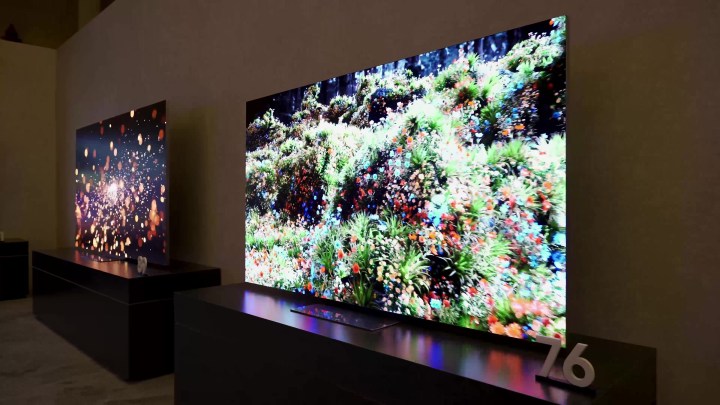
People who need that anti-glare coating, because they watch in bright rooms a lot, will probably want the S95D. And for anyone who wants the glossy screen and isn’t concerned about a greyish panel or anti-glare because they usually watch in a light-controlled room? They’ll want the S90D.
Still, I do expect some folks to be very vocal about not having an option for a glossy screen in the S95D. Never mind that it makes no sense to offer two different SKUs of the same TV model.
The other Samsung TV I think we need to watch out for is the 76-inch version of Samsung’s micro-LED TV. Samsung has not promised that this will be a model you can buy in 2024 for sure, but I have a feeling it very well could be. If it is, we are going to have a ball testing it out. The jury’s still out on how expensive it might be, though. Still, this is the most normal-person size of this new display tech, and if it becomes a consumer-level television, that’s exciting and a very big deal.
Hisense
Next in order is Hisense. There are three Hisense TVs I am excited about. The most obvious is the 110-inch UX, though perhaps not for the reasons you might think. And the other two are the U8N and U7N.
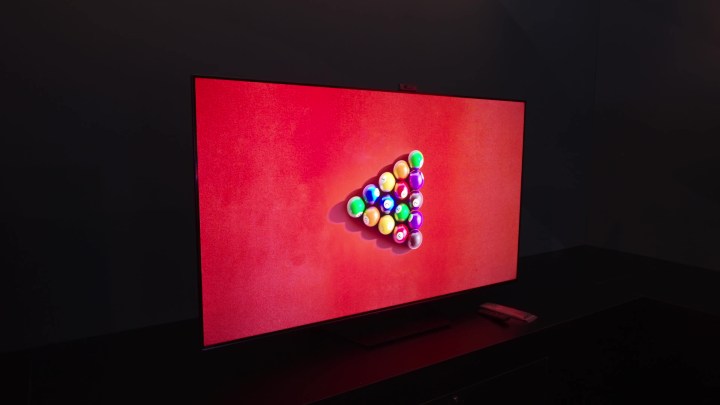
Let’s start with those last two. The U7N looks a lot like 2023’s U8K. And if I know Hisense, that means you’ll be able to get U8 performance this year for last year’s U7 prices. That just shifts Hisense’s value proposition into overdrive. But the U8N? I mean, this may be the TV to beat this year. I suspect we will have to compare it to Samsung’s QN90D, TCL’s QM8, and whatever Sony comes out with, which I’m getting to shortly.
But we can’t talk about Hisense’s 2024 TV lineup without talking about the monstrous 110-inch UX model, which promises 10,000 nits peak brightness with some 40,000 local dimming zones for its mini-LED backlight array. Now, let’s toss aside that Hisense is clearly in a specs war with its chief rival, TCL, and focus in on those numbers. Ten thousand nits is a lot. Forty thousand zones is an awful lot.

That sounds exciting, but I’m really excited to see how Hisense handles all that power. Specifically, I want to see how Hisense’s Hi-View picture processor handles the incredible demand of 40,000 local dimming zones. I want to know how it handles upscaling content to look good on such a huge screen. Perhaps most important, though, is how Hisense is going to handle the ability to get up to 10,000 nits. We know that peak brightness will only be achievable in small highlights. But what about the brightness range leading up to that? How will Hisense map the TV’s brightness when it well exceeds any HDR content available for us to watch today? At best, we can get a few titles that have been mastered at 4,000 nits. How will Hisense choose to display that content with a TV that can go so far beyond the source material’s information?
If you recall from my 85-inch UX review, Hisense’s processing was the weakest link in that TV. Now, the stakes are even higher. So, what kind of processing progress has Hisense made? That’s what I’m excited to see.
TCL
Next up is TCL. And the two TVs I’m most excited for here are the new QM8 and QM89, the latter of which is TCL’s monster 115-inch TV — the largest direct-view TV to ship to the U.S. as far as I know — capable of 5,000 nits peak brightness with over 20,000 zones.
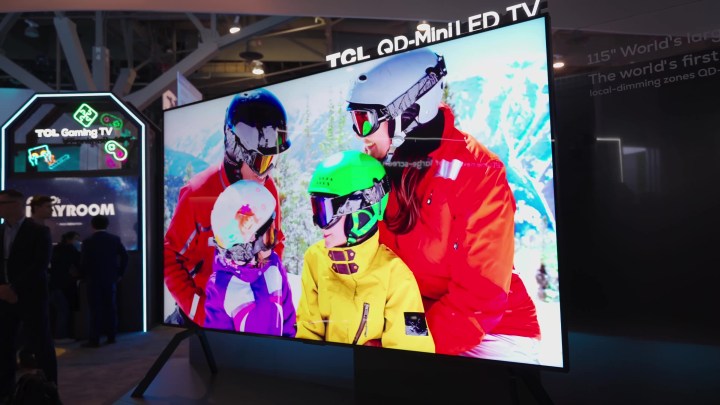
I have to wonder: Will TCL even ship me a 115-inch TV? What will that look like here? (Will it fit?) That alone is exciting. But also, how will TCL handle those 5,000 nits? How good is the control over those 20,000 zones? That’s half the brightness and half the zones Hisense is claiming for its flagship but in a bigger TV. I don’t expect there to be a big performance gulf between the TCL QM89 and the Hisense UX. I don’t know if there’s ever been a better example for the argument that specs don’t tell the whole story. At least, that’s what I suspect. But most of my excitement is over getting to find out.
If you haven’t figured it out already, we’re going to be talking a lot about peak brightness, dimming zones, and the use of mini-LED this year, and TCL and Hisense are going to be at the forefront of that conversation.
But, frankly, I think the TCL QM8 is the real TV to watch this year. Seeing it do battle against the Hisense U8N will be a treat.
CES no-shows
Next up is a TV we didn’t see at CES. In fact, we haven’t seen it at all. It doesn’t have a firm model number. We only know of its potential existence thanks to a special trip I made to Tokyo. I am, of course, speaking of whatever Sony’s flagship mini-LED TV will be in 2024.
I don’t think Sony is going to break any nits records or local dimming zone count records. And I don’t think it needs to. With Sony’s processing and their new backlight tech? I think this flagship mini-LED TV from Sony is going to be the toast of 2024. That’s a bold prediction, but I’m comfortable with it. Is this the mini-LED TV that really challenges OLED? We’re gonna find out!
Honorable mention goes out to Roku, which didn’t exhibit TVs at CES. But I’m holding on to some optimism about its new Roku Pro Series. I really hope that it is a super competitive TV.
Bonus AV I’m excited about
Now, I’ve got a couple of bonuses to share. I know they aren’t TVs, but they are TV-adjacent.
First, SVS has a new flagship speaker lineup called Ultra Evolution. I’m telling you, these have all the makings of a game-changer speaker lineup. I can’t wait to get some in and review them both from the audiophile perspective as well as the home theater perspective.
Then — this is a big one — Dolby Flex Connect. I have a full report on it coming out soon that you won’t want to miss. I think we’re going to see this tech implemented in some Hisense and TCL TVs this year, and I’m stoked to see how it’s implemented this year, but it’s really where it goes in the future that I’m most excited about. I will say right now that it has some pretty awesome potential.




